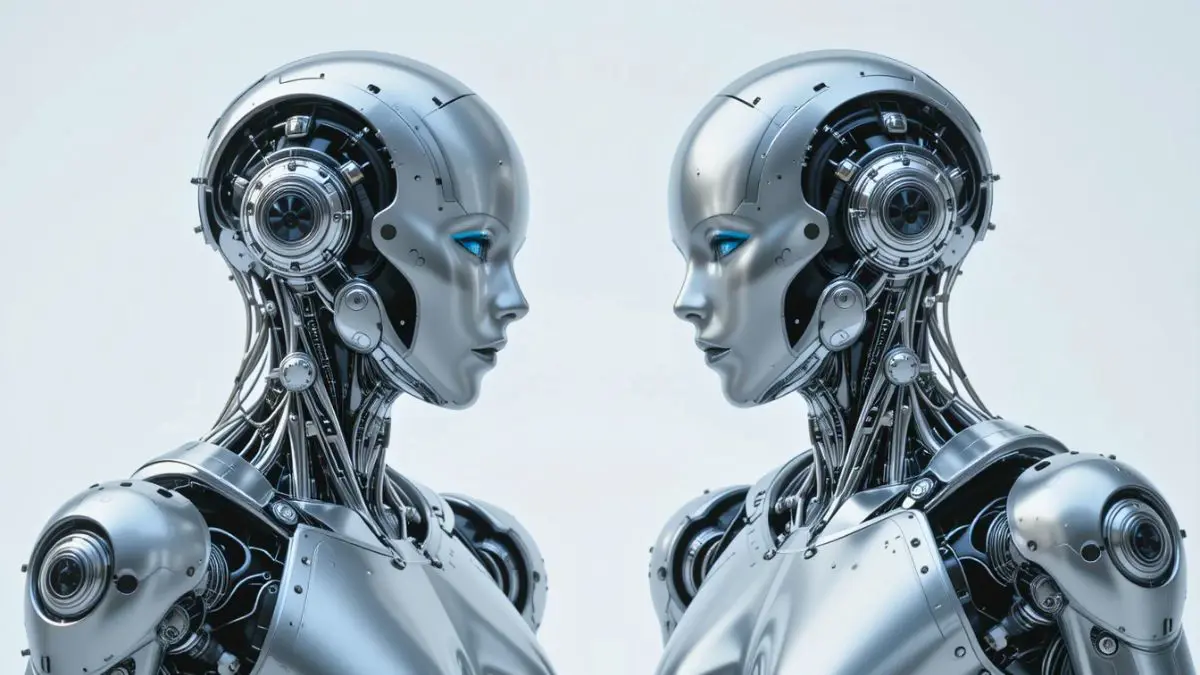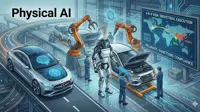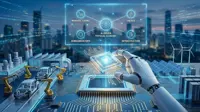China's AI-powered humanoid robots set sights on transforming global manufacturing
13 May 2025

In a quiet industrial suburb of Shanghai, a remarkable scene unfolds daily. Inside a warehouse, humanoid robots tirelessly perform repetitive tasks—folding shirts, making sandwiches, and opening doors. This isn’t just a showcase of robotics; it’s China’s bold bet on reshaping the future of manufacturing.
The warehouse belongs to AgiBot, a Chinese startup racing to perfect its robots through hours of real-world data collection—crucial for developing smarter, more capable machines. Operating 17 hours a day, these robots are part of a larger national push to integrate artificial intelligence into industry and everyday life.
“Imagine a future where our robots are assembling themselves in our own factory,” said AgiBot partner Yao Maoqing. That vision isn’t far-fetched in today’s China, where innovation and industrial ambition are tightly linked.
A strategic national priority
Beijing’s interest is clear. When President Xi Jinping personally visited AgiBot’s facility last month, it signaled strong state support for humanoid robotics as a strategic priority. Xi even quipped that the robots might one day form a football team. That light-hearted moment carried weight—especially considering China’s pressing challenges: an aging population, declining birth rates, geopolitical trade tensions, and a need to maintain its global manufacturing dominance.
The rise of humanoid robots comes at a critical time. While the U.S. continues to debate trade policy and reshoring, China is investing heavily in the technologies that could define the next industrial revolution. Agile, AI-enhanced humanoids capable of physical labor offer a potential leap beyond traditional automation.
Hardware meets AI: China’s competitive edge
China’s advantage lies in the convergence of hardware scalability, AI innovation, and generous government support. Domestic firms like AgiBot, Unitree, and MagicLab are developing humanoids that can walk, run, perform somersaults—and now, work on factory floors. Some prototypes are already deployed in quality control and materials handling roles.
A major catalyst has been the rise of advanced AI systems from firms like DeepSeek, which power these robots' “brains.” Unlike generative AI, humanoids rely on task-specific training in physical environments, requiring vast volumes of purpose-built data. To support this, local governments are stepping in. In Shanghai, for example, AgiBot was given rent-free premises for its robot-training site.
Industry analysts estimate that humanoid robot sales could reach 1 million units annually by 2030. Production costs are expected to drop significantly as China’s vast component supply chain kicks in. According to Bank of America Securities, the average bill of materials could fall from $35,000 today to around $17,000 within five years.
Billions in backing and public-private momentum
Beijing is backing this boom with capital. More than $20 billion has been funneled into the sector over the past year. A new 1 trillion yuan (around $137 billion) national fund aims to further accelerate progress in AI and robotics. Shenzhen has launched its own 10 billion yuan fund, and municipalities like Wuhan and Beijing are offering direct subsidies, free office space, and procurement incentives.
This flood of funding is triggering rapid growth. In 2024 alone, 31 Chinese firms introduced 36 humanoid models—more than quadruple the number developed by U.S. companies. With the government itself acting as a major buyer, state procurement of humanoids surged from just 4.7 million yuan in 2023 to over 214 million yuan in 2024.
Preparing for the labor shakeup
But while the industrial potential is enormous, questions around labor displacement are beginning to surface. China's manufacturing sector employs over 120 million people. At the National People's Congress, experts raised concerns that AI and robotics could disrupt up to 70% of manufacturing jobs, affecting social security systems and contributing to unemployment.
Some are proposing solutions. iFlytek’s chairman has suggested AI unemployment insurance—offering support for workers displaced by robots. Others argue that the focus should be on replacing dangerous, repetitive, or undesirable jobs, not eliminating human labor altogether.
Humanoids in elder care and beyond
One sector already being targeted is elder care. As China's population ages, robots could help fill the growing gap in caregivers. AgiBot and companies like Ant Lingbo Technology (a new subsidiary of Ant Group) are building robots that can assist with everyday activities—from organizing rooms to physically moving patients. The government has already issued guidelines promoting the use of robotics in elderly care facilities.
Despite the early-stage nature of this sector, one thing is clear: China is positioning humanoid robotics as a pillar of its future economy. With strong state backing, rapid prototyping, and integration of advanced AI, the country is accelerating toward a future where humanoids may become as commonplace in factories as forklifts are today.
Summary:
China is investing heavily in AI-powered humanoid robots to address labor shortages, maintain its manufacturing dominance, and boost economic growth. With state support, falling production costs, and growing real-world applications, these robots are moving from the lab to the factory floor. While the technology promises efficiency, concerns over job displacement are prompting discussions around policy measures like AI unemployment insurance. As the sector matures, China appears poised to lead the next phase of industrial automation.





















